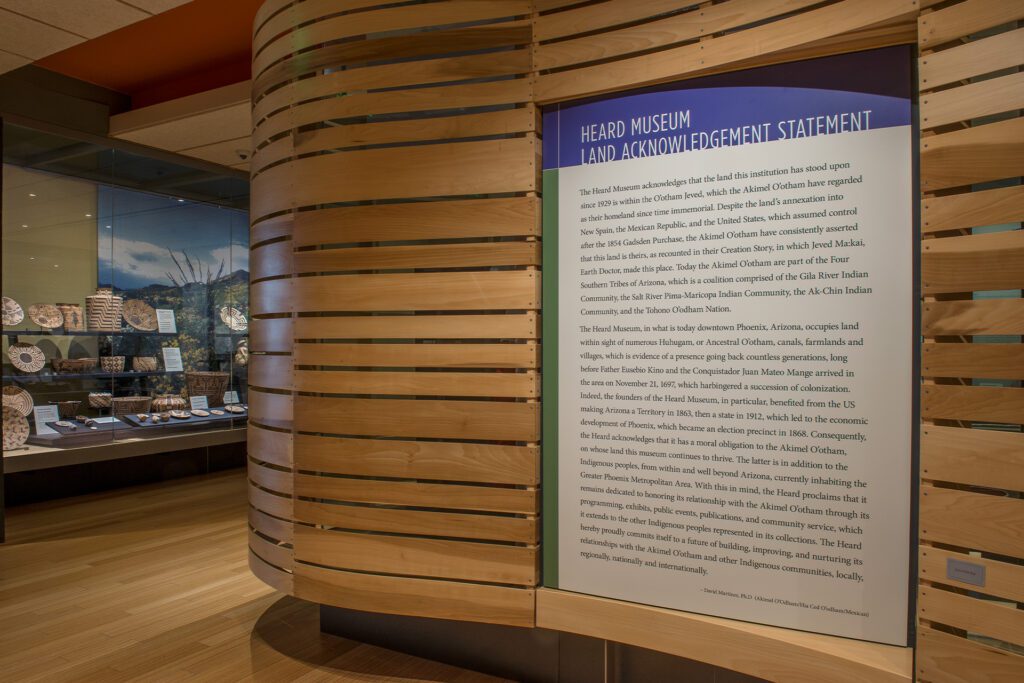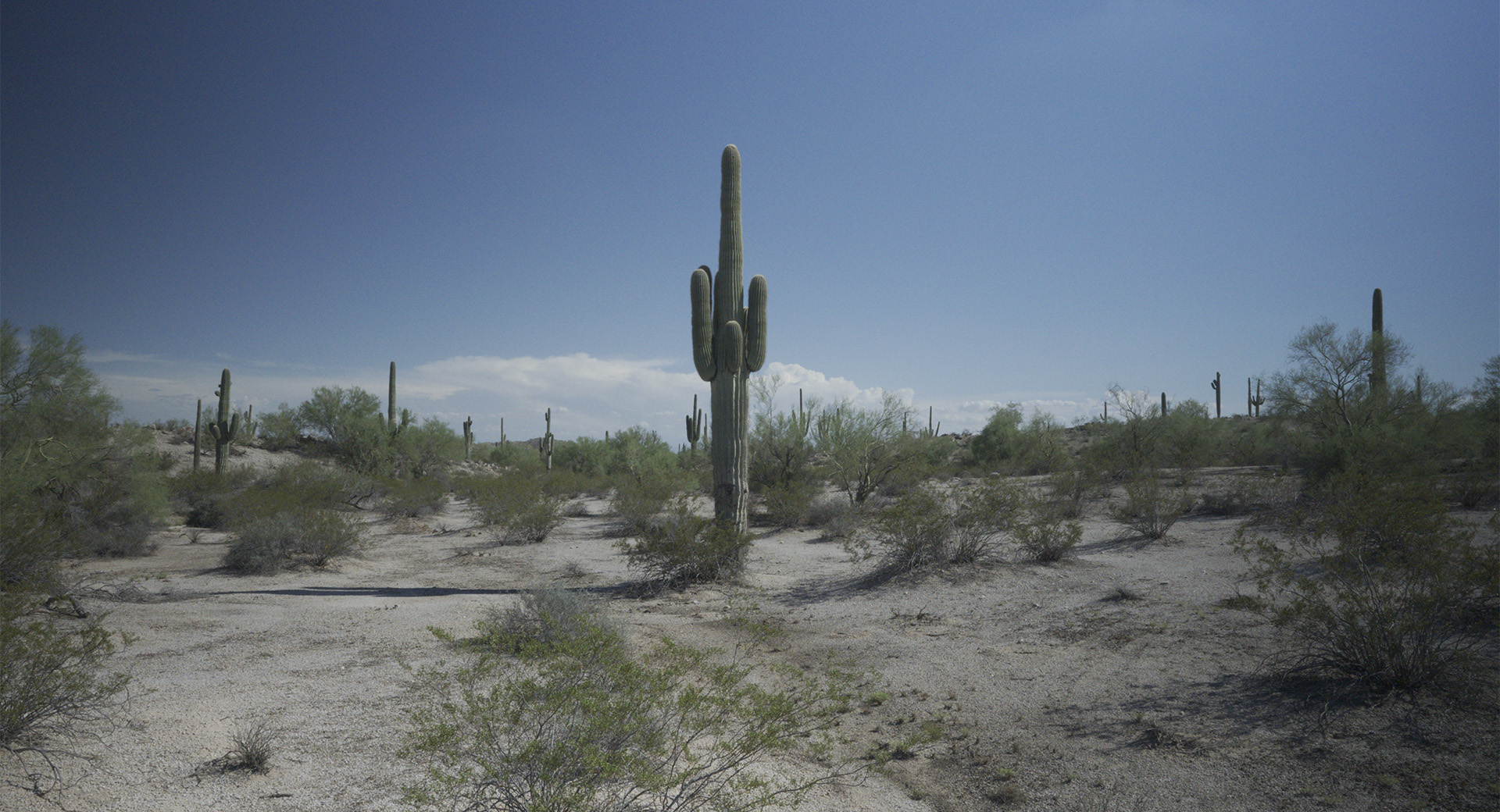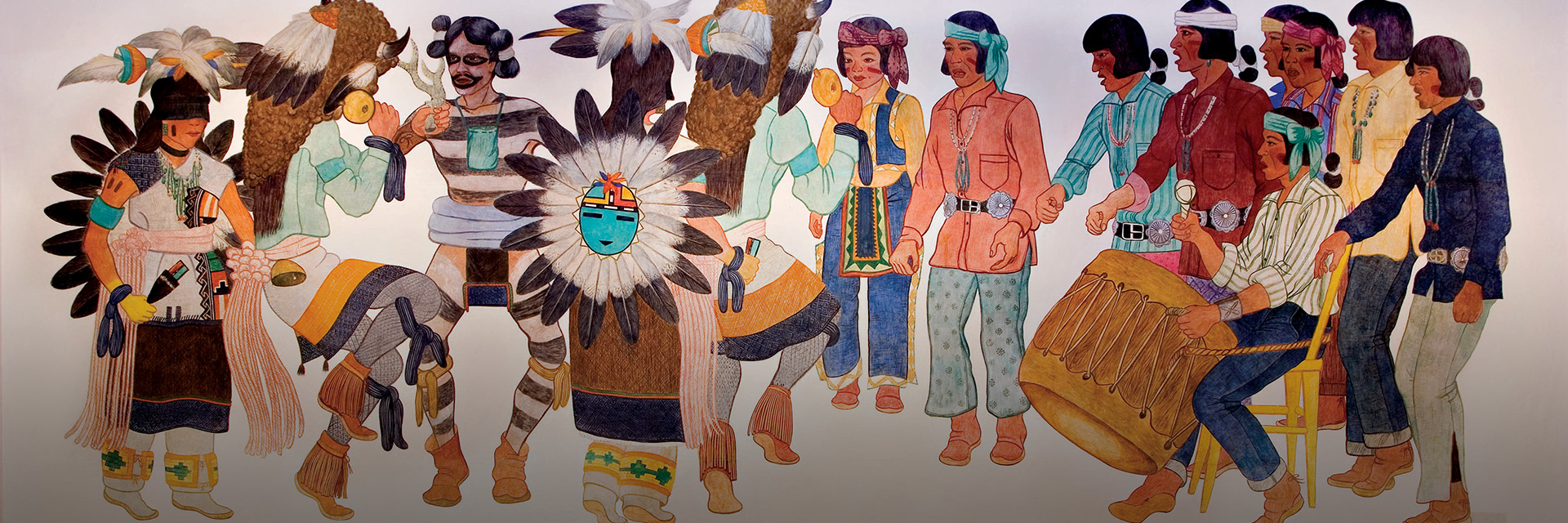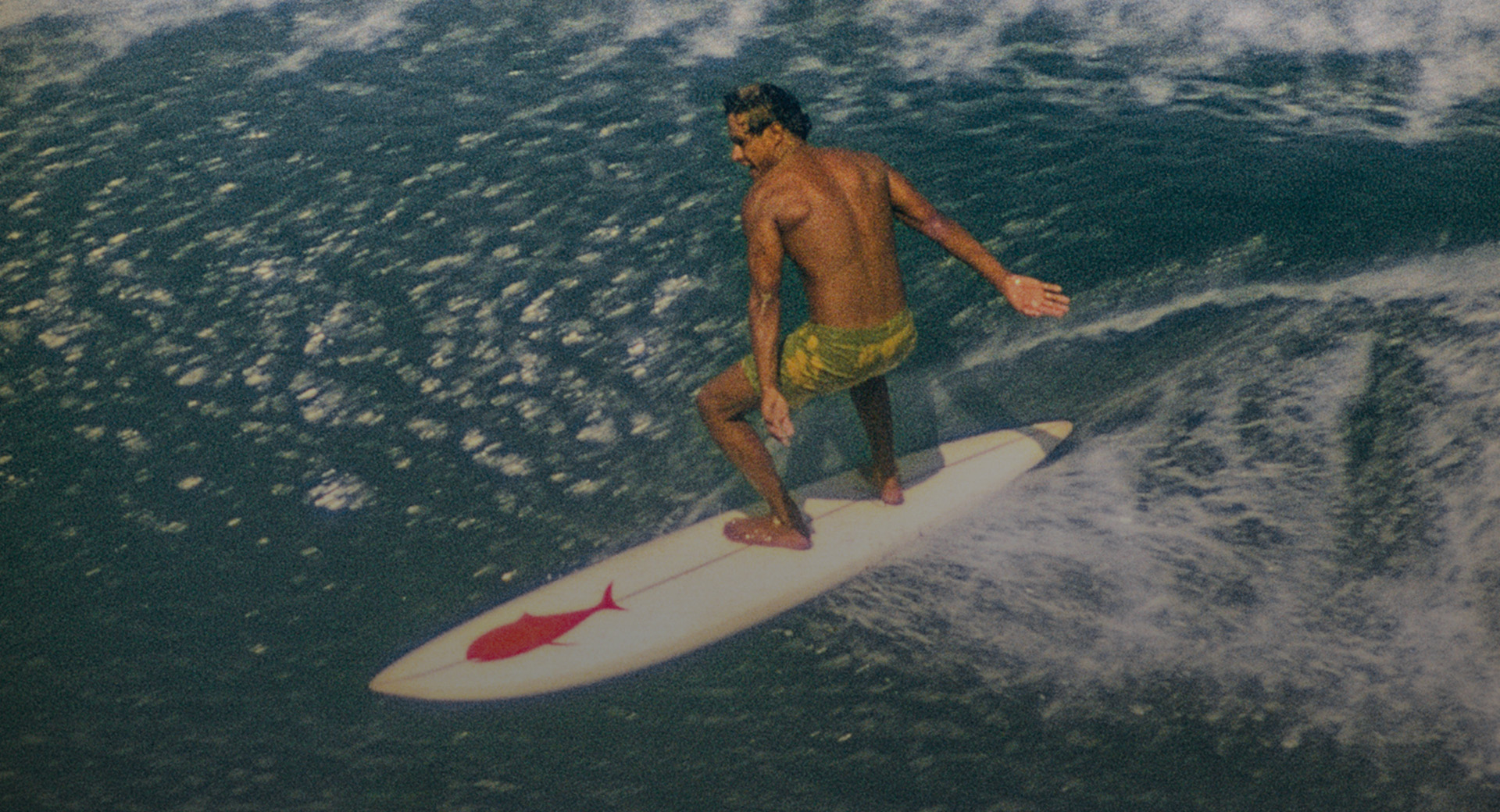Ann Marshall, director of research
Twenty years ago, the Heard Museum convened gatherings of Native American advisors from Arizona and New Mexico to ask about important topics we should present in the new installation of our permanent collection that became HOME: Native People in the Southwest. Land was a topic they all identified as one of fundamental importance. Native people’s past and present ties to the land, their knowledge of the land, their ongoing care of the land, and their loss of land through settler colonialism all were part of the important heritage that our advisors discussed and presented in the HOME exhibition.
These considerations within the context of the exhibition were appropriately regional. But what about the people on whose ancestral land the Heard Museum was built? We needed to be much more specific, so we began a two-year process that led to the approval of a land acknowledgement statement by the Heard Museum Board of Trustees on November 18, 2022.
Heard Museum Dickey Family Director & CEO David Roche reached out to Dr. David Martinez (Akimel O’otham/Hia Ced O’odham/Mexican) to lead the process in concert with the BoardProgram Committee and the American Indian Advisory Committee. The museum is fortunate to have active participation from American Indian community members on both committees, in addition to leadership by American Indian members of the Board. Discussion within the American Indian Advisory Committee was foundational, including consideration of why an acknowledgement was needed, who should be included in the acknowledgement, a literature review of existing acknowledgements, and appropriate use of a land acknowledgement. With this background, Dr. Martinez drafted an acknowledgement. He was joined by Director Roche and Dr. Trevor Reed (Hopi), Heard Museum Trustee and Co-Chair of the Board Program Committee, in presenting the draft to the Four Southern Tribes Cultural Resource Working Group.
The Four Southern Tribes group consists of representatives from the Gila River IndianCommunity, the Salt River Pima-Maricopa Indian Community, the Ak-Chin Indian Community, and the Tohono O’odham Nation. In the past, this group has been enormously helpful to the museum in matters of repatriation.
As the Four Southern Tribes considered the draft, we were very appreciative of the support of Gila River Indian Community Governor and Heard Museum Trustee Stephen Roe Lewis and the guidance of Gila River Indian Community Historic Preservation Officer Barnaby Lewis. Based on feedback, revisions to the draft were made and ultimately approved by the Four Southern Tribes.

On November 18, 2022, Dr. Reed presented the land acknowledgement to the Heard Museum’s Board of Trustees. In his presentation, Dr. Reed commented, “In the genre of land acknowledgement, this is a standout and something you don’t get to see. Usually, land acknowledgements are a couple of sentences that get right to the point. This one requires us to think through history and [consider], in the future, what our relationship with the Akimel O’odham will be.” The Board then voted to approve the land acknowledgement. The next decision involved where to place the land acknowledgement in the museum. It was decided to place the statement at the entrance to the Sonoran Desert section of the HOME exhibition, where visitors may learn in some depth about the ancestral Huhugam and their descendants, today’s O’odham. If you have not visited the HOME exhibition recently, we hope you will take a few minutes to view it and consider the Heard Museum’s relationship to the people who are part of the land on which the museum is located.
Heard Museum Land Acknowledgement Statement
The Heard Museum acknowledges that the land this institution has stood upon since 1929 is within the O’otham Jeved, which the Akimel O’otham have regarded as their homeland since time immemorial. Despite the land’s annexation into New Spain, the Mexican Republic, and the United States, which assumed control after the 1854 Gadsden Purchase, the Akimel O’othamhave consistently asserted that this land is theirs, as recounted in their Creation Story, in which Jeved Ma:kai, Earth Doctor, made this place. Today the Akimel O’otham are part of the Four Southern Tribes of Arizona, which is a coalition comprised of the Gila River Indian Community, the Salt River Pima-Maricopa Indian Community, the Ak-Chin Indian Community, and the Tohono O’odham Nation.
The Heard Museum, in what is today downtown Phoenix, Arizona, occupies land within sight of numerous Huhugam, or Ancestral O’otham, canals, farmlands and villages, which is evidence of a presence going back countless generations, long before Father Eusebio Kino and the Conquistador Juan Mateo Mange arrived in the area on November 21, 1697, which harbingered a succession of colonization. Indeed, the founders of the Heard Museum, in particular, benefited from the US making Arizona a Territory in 1863, then a state in 1912, which led to the economic development of Phoenix, which became an election precinct in 1868. Consequently, the Heard acknowledges that it has a moral obligation to the Akimel O’otham, on whose land this museum continues to thrive. The latter is in addition to the Indigenous peoples, from within and well beyond Arizona, currently inhabiting the Greater Phoenix Metropolitan Area. With this in mind, the Heard proclaims that it remains dedicated to honoring its relationship with the Akimel O’otham through its programming, exhibits, public events, publications, and community service, which it extends to the other Indigenous peoples represented in its collections. The Heard hereby proudly commits itself to a future of building, improving, and nurturing its relationships with the Akimel O’otham and other Indigenous communities, locally, regionally, nationally and internationally.
– David Martínez, Ph.D (Akimel O’Odham/Hia Ced O’odham/Mexican)



